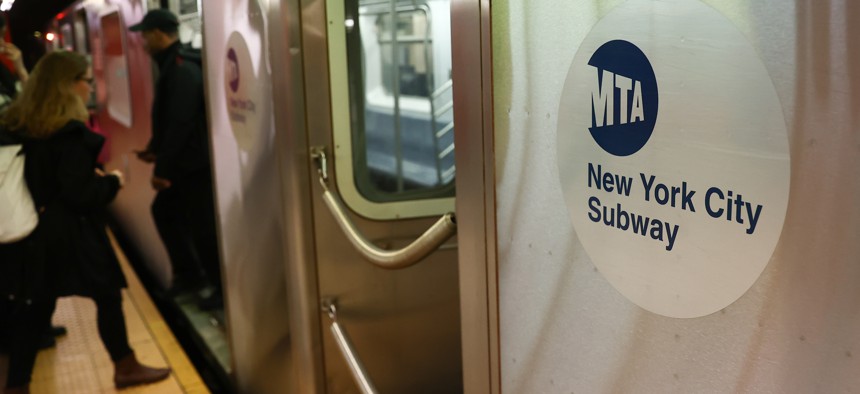MTA
MTA in need of new funding source, DiNapoli says
Filling massive operating budget deficits will require more than finding cost efficiency savings, a new report from the state comptroller said.

Passengers boarding a New York City subway train in October. (Photo by Jakub Porzycki/NurPhoto via Getty Images)
How does the country’s largest public transit system fill operating deficits of billions of dollars in coming years? Hoping for a magical return to pre-pandemic ridership and finding some service efficiencies won’t cut it for the Metropolitan Transit Authority, a new report from state Comptroller Tom DiNapoli suggests. “The MTA has suggested it can reduce budget gaps by paying debt off early, but more can be done now to find cost savings and generate revenue to close gaps sooner,” DiNapoli said in a press release announcing the report, which follows an October report also pointing to a need for new funding. “No one wants to see steep fare hikes or service cuts. However, it is unclear how the MTA will avoid these outcomes unless it lays out additional options for the public and its funding partners to consider.”
The MTA, which is set to face recurring budget deficits of more than $2.5 billion once federal aid dries up in the next couple years, has depended on farebox revenue more than comparable transit systems in other cities, the report said. Looking to new revenue streams – including state and/or local taxes and other subsidies – might put the MTA more in line with transit systems in other cities. While comparable cities’ transit systems – including Chicago’s Regional Transportation Authority, the Washington Metropolitan Area Transit Authority, Boston’s Massachusetts Bay Transportation Authority and Philadelphia’s Southeastern Pennsylvania Transportation Authority – do receive a substantial chunk of their revenue from riders, they receive a greater share of their mass transit revenue than the MTA from subsidies, the report notes.
MTA Chair Janno Lieber has also said that the old model of relying on farebox revenue for nearly half of its budget is no longer “viable or realistic.” MTA leaders have asked the state to partner in finding a new revenue stream, and DiNapoli’s report suggested that they’re right to look to Albany and other partners to avoid falling off a fiscal cliff.
“The MTA must continue to search out operating efficiencies and identify and expand cost-saving options in order to close its expected budget gaps,” the report read. “However, their magnitude makes it unlikely that they can be closed by reducing spending alone without leading to a substantial reduction in services and hurting the regional economic recovery. The MTA will have to provide its board with options that rely on raising revenues as well, and the board’s control is limited to raising fares and tolls. Ultimately, state, city and federal leaders will also need to be a part of the discussion if the MTA is to identify and secure additional subsidies to achieve balanced budgets and maintain operations.”

